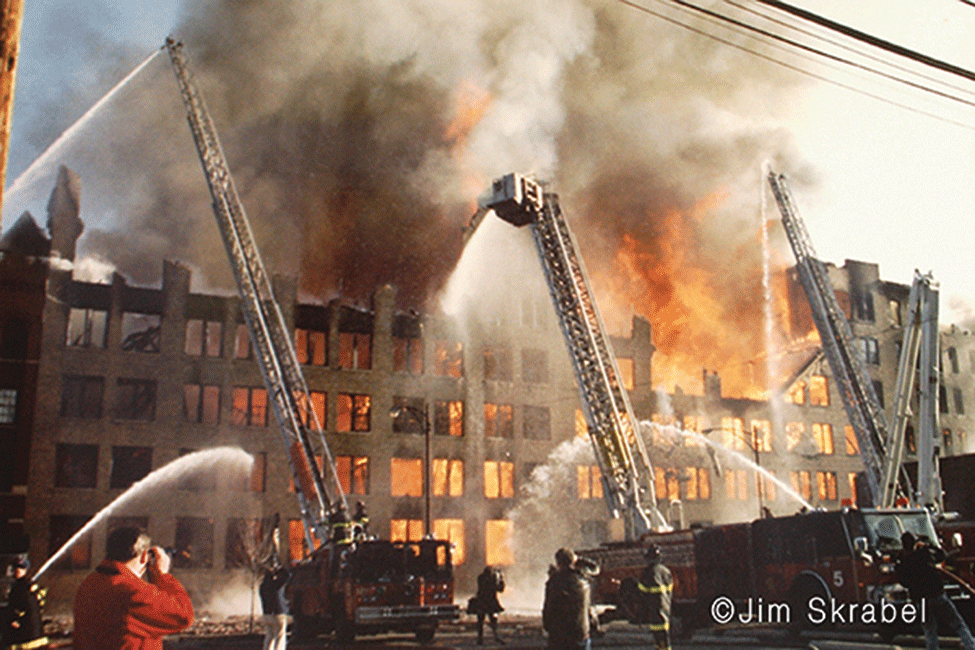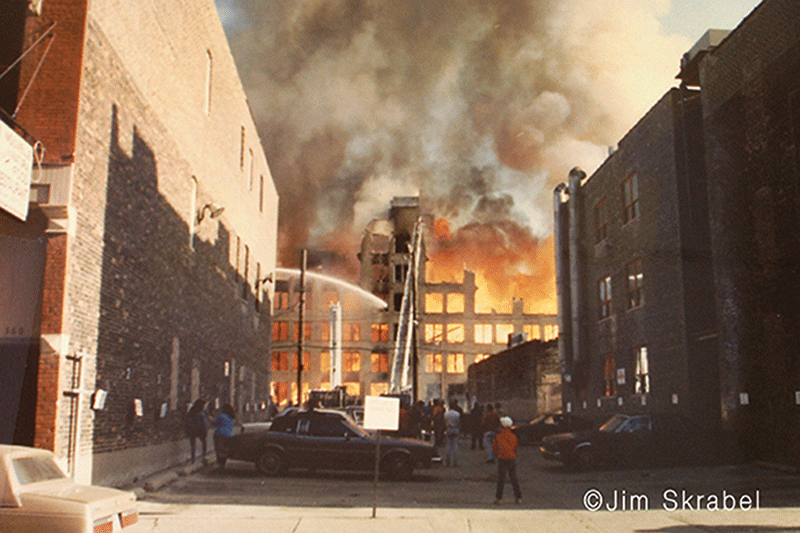30 Years Later: The 1989 River North Fire


Click to listen to the CGN Publisher's June 2019 WGN Radio Interview about the fire
By GINNY VAN ALYEA
CGN Founder Natalie van Straaten contributed to this article.
Photos © Jim Skrabel
To talk about the River North gallery fire, which happened 30 years ago today, on April 15, 1989, is to travel back in time to a period in Chicago that sounds oddly familiar: the decade heralded the arrival of a visionary art fair amidst a recession, followed by a resounding financial and real estate boom, set against a backdrop of rapid political and social change.
1989 in Chicago capped a robust expansion of the local as well as international art market: John Wilson’s Art Expo debuted at Navy Pier in 1980; dozens of galleries moved to or opened in River North throughout the decade. The country enjoyed significant economic growth in the mid ‘80s, only to be gutted by the 1987 stock market crash. For a group of Chicago galleries, April 1989 literally burned it all down.
A Chicago Tribune article about the blaze from April 1989 reads, “Artwork estimated to be worth millions of dollars was turned into ash Saturday as fire destroyed a historic brick loft building, site of the largest redevelopment project to date in Chicago’s trendy River North district.”

Much of what has changed in River North in the last three decades can be traced back to that five alarm inferno. At the time River North was truly the heart of the art gallery scene. The fire obliterated an entire square block – bounded by Huron, Sedgwick, Orleans and Superior Streets – that contained nine galleries in a former manufacturing building. It smoldered for weeks, while the shock persisted and anger grew. While most of the galleries in the fire were resilient and reopened, the neighborhood changed. It was a couple of years before the vibrant spirit returned. The district continued to house the largest number of galleries in Chicago until the early 2000s, but gradually the block that burned became a site for townhouses and design firms, and new neighborhoods drew many galleries elsewhere in the city.
Today the district is still home to more than a dozen galleries, with Zolla/Lieberman Gallery remaining as the only one from the group of nine that burned in the fire. Most of the galleries and people directly affected by the fire are no longer around or in the gallery business: Ann Nathan/Objects Gallery, Klein Gallery, Peter Miller Gallery, Sazama/Brauer, East West Contemporary, Rowe Company Fine Arts, van Straaten Gallery, and the original Habatat Gallery.
A year after the fire, a follow up article in the Tribune relayed, “The city Fire Department never reached a determination on the cause of the fire,” spokesman Tom Shephard said... The evidence was so badly damaged, we couldn’t come up with a cause.”
The destruction of art was ultimately the biggest casualty: a year’s worth of work by Zolla/Lieberman artist Chema Cobo was lost, and the entire estate of a deceased artist at Rowe was incinerated. For dozens of artists work up in smoke meant devastating personal losses, from irreplaceable art to financial lifelines. A tragedy that affected so many throughout the community is worthy of rememberance 30 years later.






